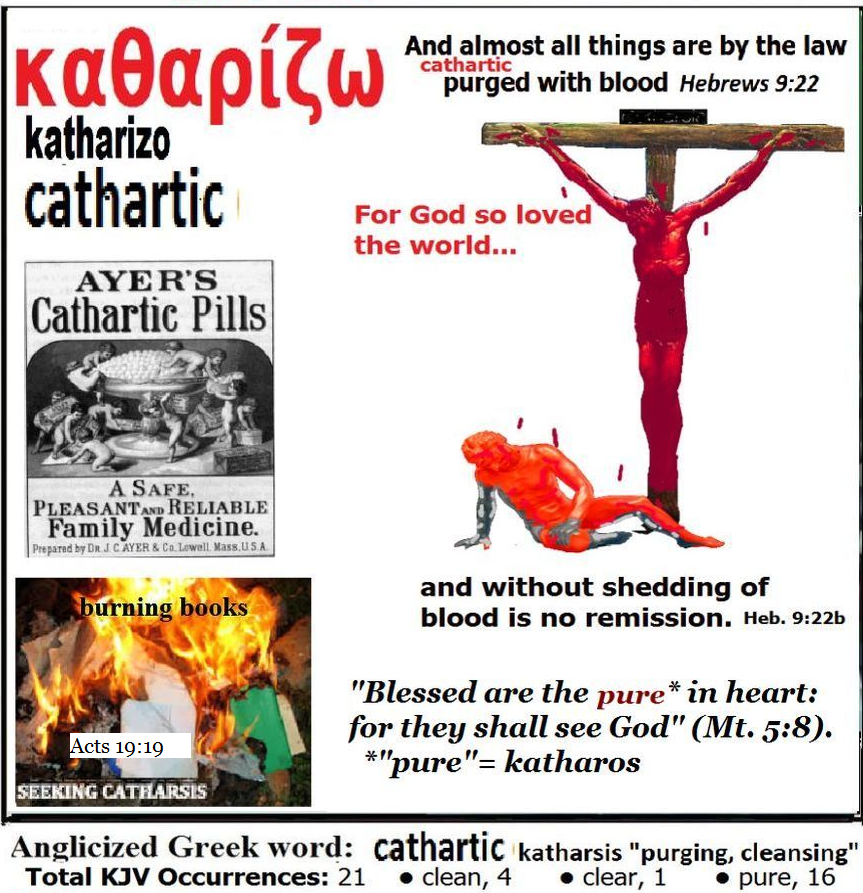- The writer of Hebrews says there were baptisms in the “first tabernacle” (that’s under Moses) and that they were a figure for the time of reformation. “While as the first tabernacle was yet standing: Which was a figure for the time then present, in which were offered both gifts and sacrifices, that could not make him that did the service perfect, as pertaining to the conscience; Which stood only in meats and drinks, and divers washings (baptismosG909), and carnal ordinances, imposed on them until the time of reformation” (Hebrews 9:8b-10). Doctrine of baptisms included then the divers washings under the tabernacle system which served as a “figure” of things to come.
-
UNDER MOSES
- Was John the Baptist the first Jew authorized to baptize people? The answer would have to be, “No” in its signification. Types of “baptisms” were practiced in the Old Testament. But not in the special sense as taught by John. As Robinson’s Word Pictures states of Hebrews 9:10, “Baptismois is, of course, the Jewish ceremonial immersions.”
-
- The Priests’ Initial Purification. Robinsonii points out that Exodus 29:4 teaches, “And Aaron and his sons thou (Moses) shalt bring unto the door of the tabernacle of the congregation, and shalt wash them with water.” Now the LXX Septuagint* uses the Greek verb λούωG3068 insteadstyle="font-size: 16pt" of baptismois in the OT passage. However, there is a relationship between these words. *[LXX was the Bible used in first century in the Empire].
-
- ΛούωG3068 is the more general term for washing.iii That is, λούωG3068 can refer to bathing body wounds (Acts 16:33) or common bathing like the daughter of Pharaoh was doing (O.T. LXX, Exodus 2:5) or to ceremonial purification bathing such as Bathsheba was doing while David was tempted (LXX, 2 Samuel 11:2, 4) or to baptism.
-
-

- This word λούωG3068 is used in the NT in Hebrews 10:22 for our current requirement of being baptized “washed (λούω) with pure water” (i.e., passive** bathedG3068 with clean water). It means to “bathe the whole person.” In another passage, Ephesians 5:26, a word derived from λούωG3068 is used for our baptismiv: “(church’s) washingG3067 of water by the Word.” Titus 3:5 uses it as “washingG3067 of regeneration.” The regeneration’s washing reminds us of the “born again” water of John 3:3, 4 (which is partially fulfilled in water baptism in Mark 16:16 and Acts 2:38). But this washing is not just a normal soap and water bathing: Peter says clearly, “baptismaG908… (not the putting away of the filth of the flesh, but the answer of a good conscience toward God,) by the resurrection of Jesus Christ” (1 Peter 3:21). **passive: someone else washes you.
-
- The OT Washing That’s Like John’s Baptism In Execution.
-
- 1. The Law required that before serving in the tabernacle, the priests, “sons of Aaron”, were to be washed at the laver*** but by another person. “(You) Wash them - λούωG3068 -(i.e., “wash all over” -Exodus 40:11-16) with water. “And Moses brought Aaron and his sons [the appointed priests for the tabernacle], and [Moses] washedG3068 them with water” (Leviticus 8:6). This resembles John the Baptist’s “washing” of his subjects. Although it is not clear how Moses bathed them, we know that John specifically dipped his subjects in water since the more descriptive word βαπτίζωG907 is specifically used. ***English “lave” is from λούω.
-
- 2. This λούωG3068 was only done once in preparation for and prior to commencing the priest’s sacred duties in the tabernacle. The penitent ones baptized by John in Matthew, etc., were on the other hand being prepared for the sacred service in the coming Kingdom of God (Matthew 3:3; 11:10) and like the OT priests were never baptized again (e.g., the apostles were included in “the them” that the Pentecost believers were “added to” - Acts 2:41).v One could reason that the “figure” of the washing of the OT priests is for that “reality” of the antitype priests (1 Peter 2:9)*** of the NT Kingdom of Christ (Matthew 12:28; Acts 1:6).
-
- ***“Unto him that loved us, and washed us (λούωG3068) from our sins in his own blood, And hath made us kings and priests unto God and his Father; to him be glory and dominion for ever and ever” (Revelation 1:5b, 6).
-

3.
Thereafter,
the priests were
required to wash
(νίπτωG3538
a
different word than λούω)vi
but
only
their hands and feet
prior to each service.vii
νίπτωG3538
specifically
means “to
cleanse (especially
the hands or the feet or the face).” “Thou
shalt also make a laver
of brass, and his foot also of brass, to wash withal: and thou shalt
put it between the tabernacle of the congregation and the altar, and
thou shalt put water therein. For Aaron and his sons shall wash
(νίπτωG3538)
their
hands and their feet thereat
when
they go into the tabernacle ...to minister”
(Exodus
30:18-19).viii
Jesus
is thought to have referenced this in His answer to Peter during the
foot washing at the “last supper” when Peter asked to be
bathed wholly. Jesus said that he “that
is washed
(λούωG3068)
needeth
not save to wash (νίπτωG3538)
his
feet, but is clean every whit: and ye are clean...”
Here
Jesus surely
confirms
that the baptism that the apostles had from John was the antitype of
the Aaronic Priesthood.ix
Note:
this is not to claim that the baptism of John was identical in all
points as the post-crucifixion baptism taught by the Holy Spirit
through the apostles. Acts 19:5 clarifies this. At Ephesus,
disciples who had not heard that the Holy Spirit had come were told
by Paul to obey that baptism commanded by the Holy Spirit. Which
they did. That’s why they were re-baptized. In other words,
after the coming of the Holy Spirit on the day of Pentecost, all new
disciples were to be baptized in the name of the Father, the Son, and
the Holy Spirit (Matthew
28:18-20).
OT Others Washed λούωG3068 Themselves
Oddly, the general Levite population were not cleansed by bathing for service like the priests. Rather, they shaved their own bodies after having been sprinkled with the “holy” water that had been made from the red heifer’s ashes (Numbers 8:7; 19:9, 10).
-
-

Uncleanness And Washing Oneself. The Greek word a-katharsiaG167, translated as "uncleanness," "defilement," occurs many times, especially in Leviticus (Leviticus 7:20,21; 14:19; 15:3,15,26,30,31, etc.). The verb form, "to make" or "declare unclean," occurs often.x The Bible includes various regulations for purification for the akatharsia that include bathing oneself. -
The purifications that required one’s bathing oneself: skin disease (Leviticus 14:8, 9; Numbers 19:7, 8); genital discharges (Leviticus 15:5-24; 27); those officiating on the day of atonement with the bullock ashes, etc., and goat (before and afterward, (Leviticus 16:1-4; 24, 26, 28; 19:7-10 [each bathes himself]), anyone touching the unclean before he can eat holy things (Leviticus 22:6), anyone contaminated by a carcass and unclean flesh (Leviticus 11:40 [ABP+V]; 17:15,16; 22:6), the corpse-contaminated priest (Numbers 19:19). I think I’ve listed all of them.
-
- Baptizing Cups and Couches?
-
The rites of purification washings were extended in the post-Babylonian Period by the Jews to a variety of unauthorized cases. Jesus called them the Pharisees’ “traditions.” Cups and pots and brazen vessels, chairs, and their bodies were washed as a matter of ritual observance (Mark 7:4).
-
- Jesus’ statement in Mark 7:4 uses both the Greek G907 and G909. Jesus accused the audience of not eating without immersing their utensils (i.e., baptizing the cups, pots, couches) and baptizing their own bodies (baptizing themselves) to be ceremonially clean from the marketplace contamination [this was strictly the sinful unauthorized glosses tuaght by the Pharisees, Matthew 15:1, 2].xi Jesus accused them, “For laying aside the commandment of God, ye hold the tradition of men, as the washing (baptismos G909) of pots and cups: and many other such like things ye do” (Mark 7:8). Note: Would this not also apply to us? That is, we must not insert our opinions into our interpreting the Scriptures like the Pharisees did?
-
- LEAVING THE BAPTISMS OF THE OLD TESTAMENT
-
There are those in certain religions that claim to follow Jesus when in truth they are not leaving the washings of the OT but are rather reviving the figures and shadows of the past system that were only types of Heavenly Things in Christ Jesus. If Jesus condemned the Pharisees for adding washings, how would He look at those today that prefer the things imposed on the Jews prior to Jesus’ time of reformation (Hebrews 9:10).
There were other baptisms that we are to “leave.”
- Gaylon West--
- i Strong’s Greek Dictionary explains that baptismosG909 is “baptism, washing”, is from baptizō, “to make whelmed (that is, fully wet)”, and is derived from baptoG911 which means “to whelm, that is, cover wholly with a fluid.”
- ii Robinson’s Word Pictures.
iii (νίζω being used of the hands and feet, πλύνω of clothes).
http://www.perseus.tufts.edu/hopper/morph?l=louein&la=greek#lexicon
ivλουτρόνG3067: according to Strong’s Dictionary: “a bath, that is, (figuratively) baptism.”
v Acts 19:1ff tells of “disciples” who had been baptized with John’s baptism after the death of Christ and the new testament was in force (Hebrews 9:15-17).
vi Strong’s Dictionary: νίπτωG3538 nip'-to To cleanse (especially the hands or the feet or the face); ceremonially to perform ablution: - wash. Compare λούωG3068 which means to bathe the whole body.
viiAn exception is where the priest involved in the burning of the heifer bathes himself (Numbers 19).
viii When the Laver was finished its waters were used to give Aaron and his sons a bath for ordination, Exodus 40:12-15; and after this they had only to wash their hands and feet in it each time they entered the Tabernacle, ‘lest they die,’ 30:20.
ix Note: In Solomon’s Temple “the Sea” and “ten lavers” were added for the washings. “He made (in Solomon’s Temple) also ten lavers, and put five on the right hand, and five on the left, to wash in them: such things as they offered for the burnt offering they washed in them; but the sea was for the priests to wash in” (2 Chronicles 4:6). The texts explain that this laver was to be used for the Israelite priests to wash their hands and feet when they entered the sanctuary (e.g., Exodus 30:19).
x The Hebrew 'erwah (Greek aschēmōnG809) that occurs in Deuteronomy 23:14 as 'erwath dabhar, "unclean thing" (Deuteronomy 24:1; also in Leviticus 18 and 20) is translated "uncleanness” in the King James Version. However, this word is not related to the ceremonial akatharsia (Heb. tame’) but has to do with moral and Law violations. It is translated many times as “nakedness” (Greek aschēmōnG809) in Leviticus 18 which is interpreted by the New Testament as “fornication” (1 Corinthians 5:1f).
xi The Pharisees are erroneously accused of being “too strict” in observing the Law by some religiounists. In fact, Jesus condemns them for adding to the Law and stressing such. An example is baptizing themselves after shopping (Mark 7).

|